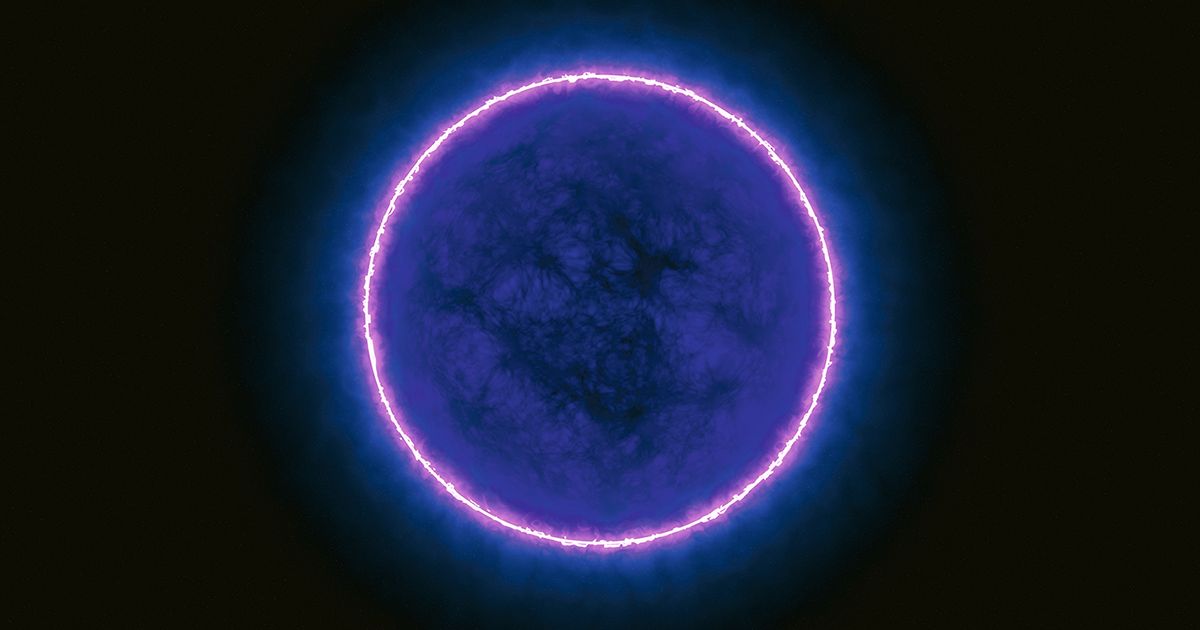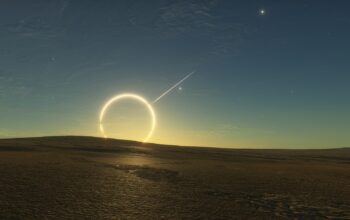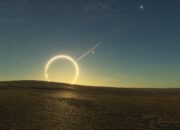In the vast expanse of the cosmos, astronomers encounter myriad celestial phenomena that challenge our understanding of the universe. Among these, the enigmatic concept of dark matter remains a pivotal aspect of contemporary astrophysics. Its presence, inferred through gravitational effects rather than direct observation, influences the formation and evolution of cosmic structures. A particularly intriguing consequence of dark matter’s gravitational interplay is the birth of strange stars, a hypothetical stellar class that epitomizes the complexities inherent in high-energy physics and astrophysical processes.
Dark matter constitutes approximately 27% of the universe’s mass-energy content, contrasting with the visible matter that forms stars, planets, and galaxies. Direct detection of dark matter poses significant challenges, yet its gravitational influence is unmistakably evident in galactic rotation curves and the cosmic microwave background. Observations indicate that dark matter contributes to the clustering of matter on cosmological scales, affecting the formation of galaxies and their components. The operations of dark matter are not merely restricted to large structures; they also profoundly impact stellar evolution and the ultimate fate of stars.
The concept of strange stars emerges from a synthesis of quantum chromodynamics and astrophysics, blending different areas of physical theory. These hypothetical stars are theorized to consist of strange quark matter — a state of matter containing roughly equal numbers of up, down, and strange quarks. Such a configuration would arise under extreme conditions, typically found in the remnants of supernova explosions or during mergers of neutron stars. Herein lies one of the cornerstones of fascination surrounding strange stars; they reveal the potential for exotic states of matter existing under extreme conditions previously thought unfathomable.
Astrophysical processes leading to the formation of strange stars are intrinsically linked to the dynamics of dark matter within galaxies. The merging of dense neutron stars can trigger conditions conducive to the creation of strange quark matter. During such cataclysmic events, immense gravitational forces and temperatures can catalyze quark degeneracies, transmogrifying ordinary nuclear matter into the denser form of strange matter. When dark matter interacts with these processes, it amplifies the energy density and gravitational fields, facilitating the conditions necessary for exotic stellar formations.
In exploring the connection between dark matter and strange stars, one must consider how dark matter clumps around baryonic matter. This clumping modifies the gravitational potential wells within galaxies and influences star formation rates and mechanisms. The distribution of dark matter not only dictates the evolution of galaxies but consequently their stellar populations, thus setting the stage for the emergence of strange stars. The tantalizing possibility that dark matter might enhance the likelihood of such stellar births serves as a focal point of research efforts in modern astrophysics.
The theoretical underpinnings of strange stars are bolstered by various modeling approaches. Numerical simulations have indicated that under specific conditions, strange matter configurations are energetically favorable and stable. The fascinating notion that strange stars, if real, might exist in the universe invites multiple observational inquiries. Gravitational wave detections from neutron star mergers have provided concrete data relating to dense matter states. The prospect of identifying signals from strange stars or unusual signatures aligned with dark matter interactions could lead to breakthroughs in understanding fundamental physics.
Furthermore, an overarching theme persists in the context of dark matter and strange stars: the quest for knowledge about the universe’s composition. They symbolize humanity’s fervent curiosity to explore the macroscopic manifestations of the deep, often esoteric, laws governing matter. The very necessity of reconciling relativity with quantum mechanics surfaces in discussions regarding strange stars — they represent the ultimate test case for theories attempting to unite these disparate pillars of modern physics. One encounters a profound irony in how these exotic constructs may embody the very mechanisms that were supposed to illuminate the nature of dark matter itself.
The implications surrounding the potential existence of strange stars could extend far beyond mere astrophysical curiosity; they traverse into realms of fundamental physics. If strange quark matter exists, it may serve as a cosmic reservoir possessing unique properties that challenge established paradigms. For instance, these strange stars could exhibit phenomena such as rapid rotational speeds and unexpected energetic outputs, leading scientists to reevaluate existing models governing stellar dynamics. Their study offers a window into conditions that may prevail in the early universe, ultimately contributing to our comprehension of cosmic evolution.
In conclusion, the interplay between dark matter and the birth of strange stars encapsulates remarkable intricacies within the cosmos. As the universe unfolds its secrets, each observation and discovery leads to further questions, illustrating the perpetual dance of inquiry that embodies science. The marriage of dark matter’s elusive nature with the hypothesis of strange stars compels researchers to delve deeper into the universe’s fabric, probing its mysteries layer by layer. Ultimately, the fascination surrounding these topics is not merely a reflection of their theoretical complexities; it embodies humanity’s relentless pursuit of understanding our place in the grand tapestry of existence.










